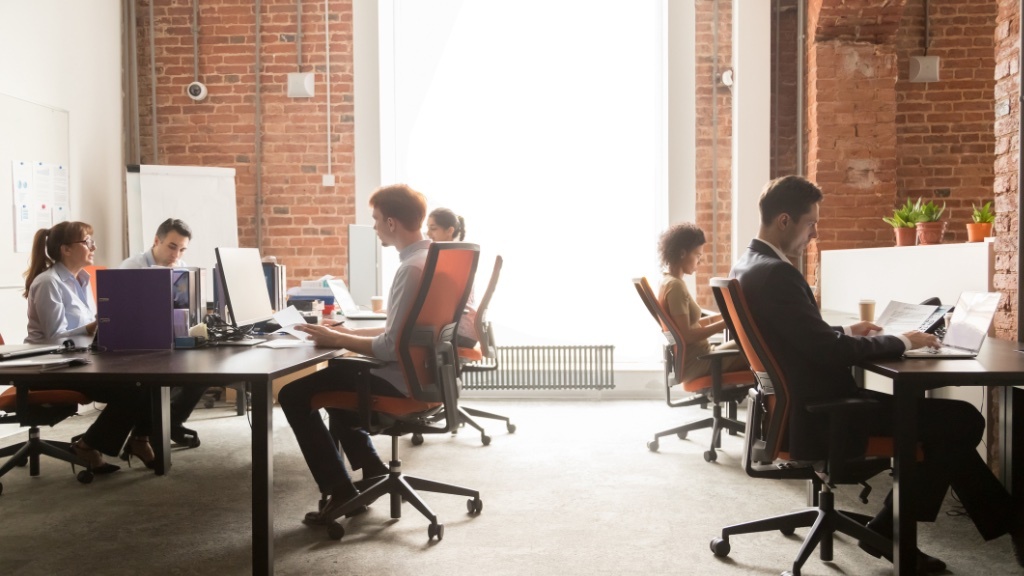Three agreements that will make working in an open office environment much easier
Datum: 2025-03-31 07:42

The open and/or activity-based office spaces seem to be increasing in number — at least based on what I hear from my clients. I get asked to lecture on how you, with the help of good structure, can learn to enjoy and work better in this setup quite often these days.
For you who prefer listening to reading, this post is also available as an episode of the “Done!” podcast:
Out of confinement and into the thick of it?
Many who are used to so-called “cell offices” with a door that can be closed are afraid that the work and their health will suffer as they transfer into a more open office environment where colleagues are surrounding them at all times. They are often very concerned that they will not be left alone to work undisturbed and with concentration at all from now on.
Conversations to ease the proceedings
As it turns out, organizations in which a number of agreements are made between colleagues regarding how to act in a few different situations appear to avoid a number of negative effects that can come from working in open office environments. This applies both to the more classical open landscape where everyone still has their designated places and seats, as well as the activity-based office where you need not adhere to strict silence, and which is more “like a regular office”.
Do you think your company could use some of these agreements? Good!
If so, try this
If you, like many other companies, could use some touching up of the guidelines dictating what you do and do not do in your office when it comes to making space for both concentrated work and spontaneous co-working, then do this:
- Before the next appropriate meeting you have with the people you work closest to (perhaps a team meeting, a department meeting, or the likes), add an item to the agenda about that you will discuss and make agreements regarding, for instance, the following:
- How will you clearly signal to one another that you are not currently available for helping others or any “quick questions” your colleagues might have at the moment? Will you let the status in the company chat be the way to signal your status, will it be a sign or some other symbolic item you place on your desk, or will you do something else more appropriate to you, your team, and your workplace?
- What will you do when you wish to discuss something with someone in the open office landscape for longer than it takes to address “just a quick question”? Will you retreat into a conference room when discussions turn into a proper meeting? Or are these conversations something that you all feel belong in the open environment and which should thereby simply be held by someone’s workstation?
- What kind of quick questions or conversations will you keep in the chat (meaning Teams, Slack, or whatever channel your company uses) instead of shouting it across the room?
- After the meeting, document what you decided to do and publish or save it somewhere where it will be easily accessible to everyone, even new employees who need to figure out how things are done in your particular workplace.
A common approach
If you and your colleagues establish the simplifying agreements and guidelines you need to be able to work in close proximity to one another without disturbing each other, it will become easier to work, you will be able to focus more, and you will do so without losing that great access to each other you get when working in this kind of setting.
Some might argue that “a little common sense will get you quite far enough” and that such rules are not necessary, but we do in fact often differ greatly in both what is obvious and what our preferred working environment is. A conversation to bring it up and an agreement to settle the do’s and don’ts will make it all much more clear to everyone involved.
What’s been your solution?
There are, naturally, a great many other things in addition to those I have mentioned which you could do and agree upon to make your professional coexistence smooth, more effective, and enjoyable. What have you discussed at your office and what decisions have you made to benefit a constructive environment at work? Email me and share your thoughts!
(By the way, do you know there’s research that points to that we work better together with the right music?)
There's more!

If you want more tips on how to create good structure at work, there are many ways to get that from me - in podcasts, videos, books, talks and other formats.




